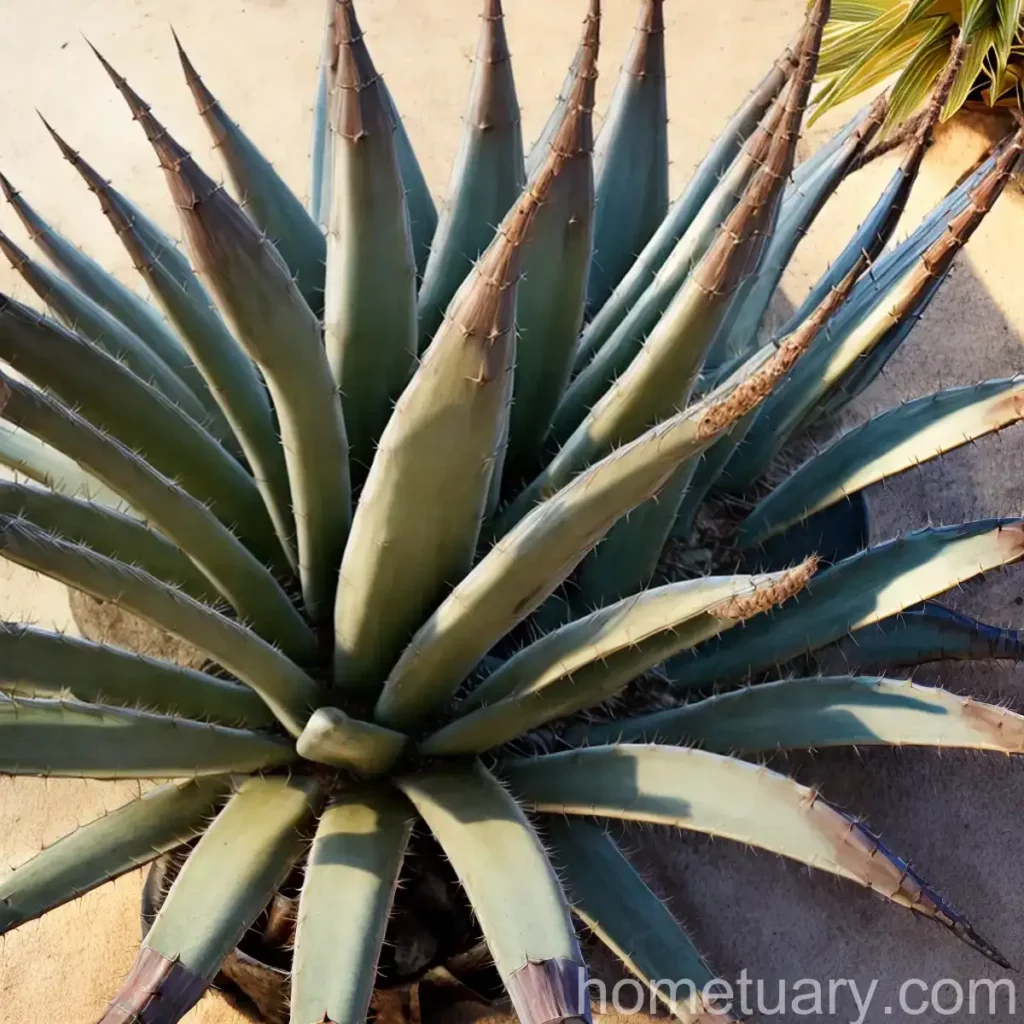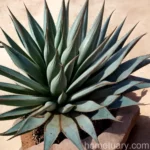Century Plant (Agave schidigera): A Remarkable Succulent for Your Garden
In the world of landscaping and gardening, the agave plant has captivated the attention of enthusiasts and professionals alike. Agave plants are known for their stunning aesthetic appeal, low maintenance requirements, and remarkable adaptability to various environmental conditions. One of the most renowned species within the Agave genus is the Century Plant, scientifically referred to as Agave schidigera. This resilient succulent boasts remarkable features that make it a sought-after addition to gardens and landscapes globally.
In this comprehensive guide, we will delve into the captivating world of Agave schidigera, exploring its characteristics, growth requirements, uses, landscaping potential, as well as its maintenance and care. Whether you are a seasoned horticulturist or an avid gardening enthusiast, this detailed account will provide you with valuable insights into the mesmerizing Century Plant.
What is the Century Plant (Agave schidigera)?
The Century Plant, Agave schidigera, is a species of agave that belongs to the Asparagaceae family. This striking succulent is native to the Sonoran Desert in northwestern Mexico and southwestern Arizona. It is often referred to as the “Desert Agave,” owing to its natural habitat in arid and semi-arid regions. The name “Century Plant” is derived from the misconception that it takes a century to bloom, although in reality, the flowering period typically ranges from 10 to 25 years, depending on the environmental conditions and the specific plant’s growth.
Agave schidigera is renowned for its striking appearance, characterized by rosettes of succulent, spiky leaves and the impressive flower stalk that emerges during its blooming phase. The plant’s impressive ornamental value, coupled with its resilience and adaptability, has made it a cherished addition to xeriscapes, rock gardens, and outdoor landscaping projects across diverse climates.
Key Takeaways – Century Plant (Agave schidigera)
Before delving into the specifics of caring for and utilizing Agave schidigera, let’s first explore the key takeaways that define this remarkable succulent:
- Scientific Name: Agave schidigera
- Common Names: Century Plant, Desert Agave
- Plant Family: Asparagaceae
- Native Habitat: Sonoran Desert in northwestern Mexico and southwestern Arizona
- Growth Habit: Rosettes of succulent, spiky leaves with an impressive flower stalk during blooming phase
- Drought Tolerance: Highly tolerant of arid and semi-arid conditions
- Landscaping Uses: Ideal for xeriscapes, rock gardens, and outdoor landscaping in various climates
- Flowering: Typically blooms every 10 to 25 years
Now that we have gained a foundational understanding of Agave schidigera, let’s delve into the specifics of its cultivation, care, uses, and maintenance.
Culture
Cultivating Agave schidigera requires a fundamental understanding of its natural habitat and the environmental conditions that support its optimal growth. The following factors are crucial for fostering the thriving culture of the Century Plant:
- Native Habitat: Understanding the native habitat of Agave schidigera is essential for recreating its preferred environmental conditions. As a native of the Sonoran Desert, it thrives in arid and semi-arid regions, with well-draining, sandy or rocky soils and ample sunlight.
- Drought Tolerance: Agave schidigera exhibits a remarkable ability to thrive in drought-prone environments. Its succulent leaves store water, enabling it to endure prolonged periods of drought without compromising its health and vitality.
- Adaptability: This resilient succulent has adapted to thrive in harsh conditions, making it an ideal choice for gardens and landscapes in regions with high temperatures and limited water availability.
Uses
Agave schidigera holds significant value in various applications, ranging from ornamental landscaping to traditional and culinary uses. Understanding its diverse uses enables horticulturists and garden enthusiasts to maximize its potential in different contexts:
- Ornamental Landscaping: The impressive aesthetic appeal of Agave schidigera makes it a coveted choice for ornamental landscaping. Whether used in xeriscapes, rock gardens, or as standalone focal points, its striking rosettes and occasional blooming add visual interest to outdoor spaces.
- Traditional & Culinary Uses: In certain cultures, various parts of the Agave plant are utilized for traditional and culinary purposes. For instance, the sap, known as aguamiel, is harvested from the plant and used to produce syrup, fermented beverages, and even distilled spirits.
Water
Understanding the water requirements of Agave schidigera is crucial for maintaining its health and vitality. While it exhibits exceptional drought tolerance, providing adequate water when necessary is essential, especially during its establishment phase and prolonged periods of extreme heat:
- Establishment Phase: Newly planted Agave schidigera specimens benefit from regular watering to facilitate root establishment. Once the plant is established, it becomes more resilient to drought conditions.
- Drought Adaptation: Agave schidigera’s succulent leaves enable it to store water efficiently, allowing it to withstand extended periods of drought without experiencing detrimental effects.
Sunlight
Optimal sunlight exposure is instrumental in ensuring the robust growth and development of Agave schidigera. Understanding its sunlight requirements is essential for selecting appropriate planting locations and facilitating its thriving culture:
- Full Sun: Agave schidigera thrives in full sun exposure, making it well-suited for landscapes and gardens with ample sunlight. Planting it in areas with direct sunlight enables it to photosynthesize effectively and maintain its vibrant, healthy appearance.
Fertilizer
While Agave schidigera is renowned for its adaptability to nutrient-poor soils, providing supplementary nutrients through strategic fertilization can support its overall health and vigor:
- Minimal Fertilization: Agave schidigera typically thrives in nutrient-poor soils, and excessive fertilization can hinder its natural growth habits. A balanced, low-nitrogen fertilizer applied sparingly during its active growing season can support its thriving culture.
Soil
The soil composition and structure play a significant role in the successful cultivation of Agave schidigera. Understanding its soil requirements is essential for creating an environment conducive to its optimal growth:
- Well-Draining Soil: Agave schidigera thrives in well-draining soils, such as sandy or rocky substrates. This facilitates the efficient removal of excess water, preventing waterlogged conditions that can be detrimental to the plant’s health.
- Arid Environments: The succulent nature of Agave schidigera allows it to thrive in arid environments with minimal organic matter in the soil. This adaptability makes it an excellent choice for landscapes with challenging soil conditions.
Pruning
Pruning Agave schidigera primarily involves the removal of dead or decaying leaves to maintain its overall appearance and prevent potential disease or pest infestations:
- Leaf Maintenance: Over time, older leaves of Agave schidigera may wither and turn brown. Pruning these dead leaves helps maintain the plant’s aesthetic appeal and prevents them from becoming a breeding ground for pests or pathogens.
Propagation
The propagation of Agave schidigera enables horticulturists and enthusiasts to expand their plant collection and share the beauty of this remarkable succulent with others. Understanding the propagation methods is essential for successful reproduction:
- Offsets: Agave schidigera produces offsets, also known as “pups,” around the base of the mother plant. These offsets can be carefully separated and propagated to create new plants, preserving the genetic traits of the parent plant.
Container Popularity
Agave schidigera’s popularity in container gardening is influenced by its striking appearance, adaptability to constrained environments, and minimal maintenance requirements. Utilizing containers to showcase this remarkable succulent offers several advantages:
- Space Efficiency: Container-grown Agave schidigera can thrive in smaller outdoor or indoor spaces, making it a versatile choice for urban gardens, patios, and balconies.
- Portability: Containers allow for easy relocation of Agave schidigera, enabling gardeners to optimize its position based on sunlight availability and aesthetic preferences.
Common Diseases
While Agave schidigera is renowned for its resilience, it can be susceptible to certain diseases, particularly under unfavorable conditions. Recognizing common diseases and their potential impact is essential for proactively safeguarding the health of this remarkable succulent:
- Root Rot: Prolonged periods of excessive moisture or waterlogged soil can lead to root rot in Agave schidigera, causing symptoms such as wilting, yellowing leaves, and a foul odor emanating from the roots.
- Leaf Spot Diseases: Fungal pathogens can cause unsightly leaf spot diseases, resulting in the formation of discolored or necrotic spots on the foliage. Proper sanitation and preventive fungicidal treatments can help manage these issues.
Disease Diagnosis
Diagnosing diseases affecting Agave schidigera involves careful observation of symptoms and the implementation of proactive measures to mitigate their impact. Common diagnostic steps include:
- Visible Symptoms: Observing changes in leaf color, texture, and overall plant vitality can provide insight into potential diseases affecting Agave schidigera.
- Consultation: Seeking guidance from certified plant health professionals or extension services can aid in accurate disease diagnosis and the implementation of appropriate treatment strategies.
Common Pests
Agave schidigera is relatively resistant to pest infestations due to its natural deterrents, such as spiky leaves and robust constitution. However, certain pests may still pose a threat to its health, necessitating vigilant pest management practices:
- Agave Snout Weevil: This notorious pest targets various agave species, including Agave schidigera, by burrowing into the plant’s crown and causing extensive damage. Monitoring for signs of weevil activity and implementing control measures is essential for safeguarding the plant.
- Spider Mites: These tiny arachnids can infest Agave schidigera, causing stippling and discoloration of the foliage. Regular inspection and the application of appropriate miticides can help manage spider mite populations.
Botanist’s Tips
To ensure the successful cultivation and care of Agave schidigera, it is valuable to heed the insights and recommendations of experienced botanists and plant experts. The following tips offer guidance for optimizing the culture and maintenance of this captivating succulent:
- Well-Draining Soil: Utilize well-draining soil mixes or amend existing substrates with sand or perlite to create an environment conducive to Agave schidigera’s growth.
- Sunlight Considerations: When selecting planting locations, prioritize areas with ample sunlight to support the plant’s photosynthetic activities and overall vigor.
- Disease Prevention: Implement preventive measures, such as proper watering practices and good air circulation, to reduce the risk of diseases affecting Agave schidigera.
Fun Facts
Embracing the captivating allure of Agave schidigera involves appreciating its unique attributes and the fascinating role it plays in various ecosystems and cultural traditions. Here are some fun facts to enhance your appreciation of this remarkable succulent:
- Longevity: While the “century” in its common name suggests a prolonged blooming period, Agave schidigera typically flowers every 10 to 25 years, still showcasing an impressive display of natural beauty.
- Artistic Inspiration: The striking form and texture of Agave schidigera’s rosettes and leaves have served as inspiration for artists and designers, influencing various creative works and architectural designs.
Links to External Resources
To further expand your knowledge and exploration of Agave schidigera, the following links to external resources offer additional insights, research findings, and expert perspectives on this captivating succulent:
- The Agave Family: Century Plants
- Cactus and Succulent Society of America (CSSA)
- RHS – Royal Horticultural Society: Growing Agaves
In conclusion, Agave schidigera stands as a testament to nature’s resilience and beauty, captivating enthusiasts and professionals with its striking presence and remarkable adaptability. By understanding its growth requirements, maintenance practices, and diverse uses, we can further appreciate and embrace the intrinsic value it brings to gardens, landscapes, and ecosystems. Whether showcased in a desert-inspired garden or incorporated into a xeriscape design, the Century Plant continues to inspire and captivate all who encounter its timeless allure.















